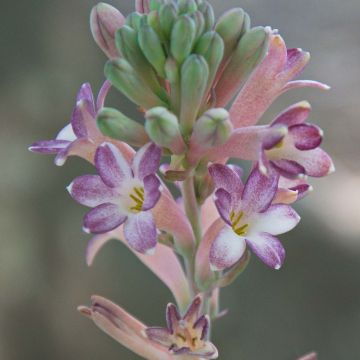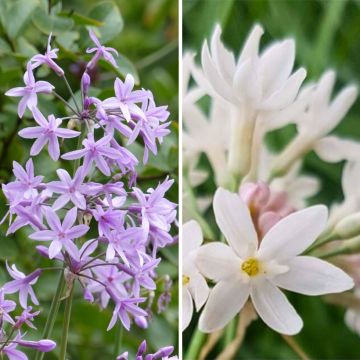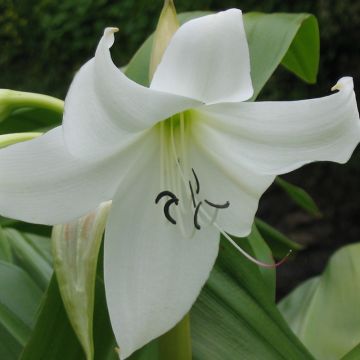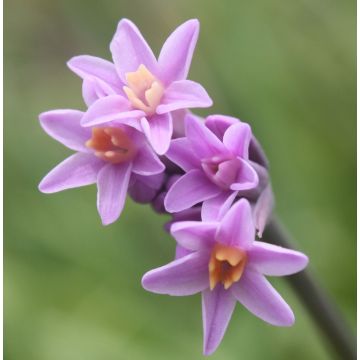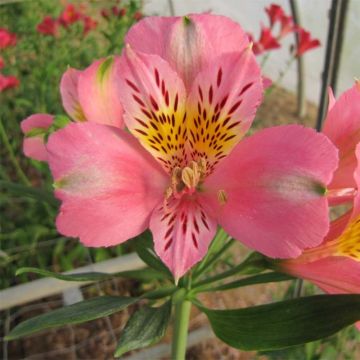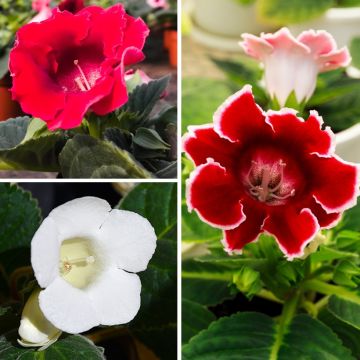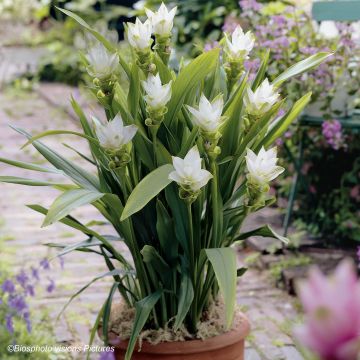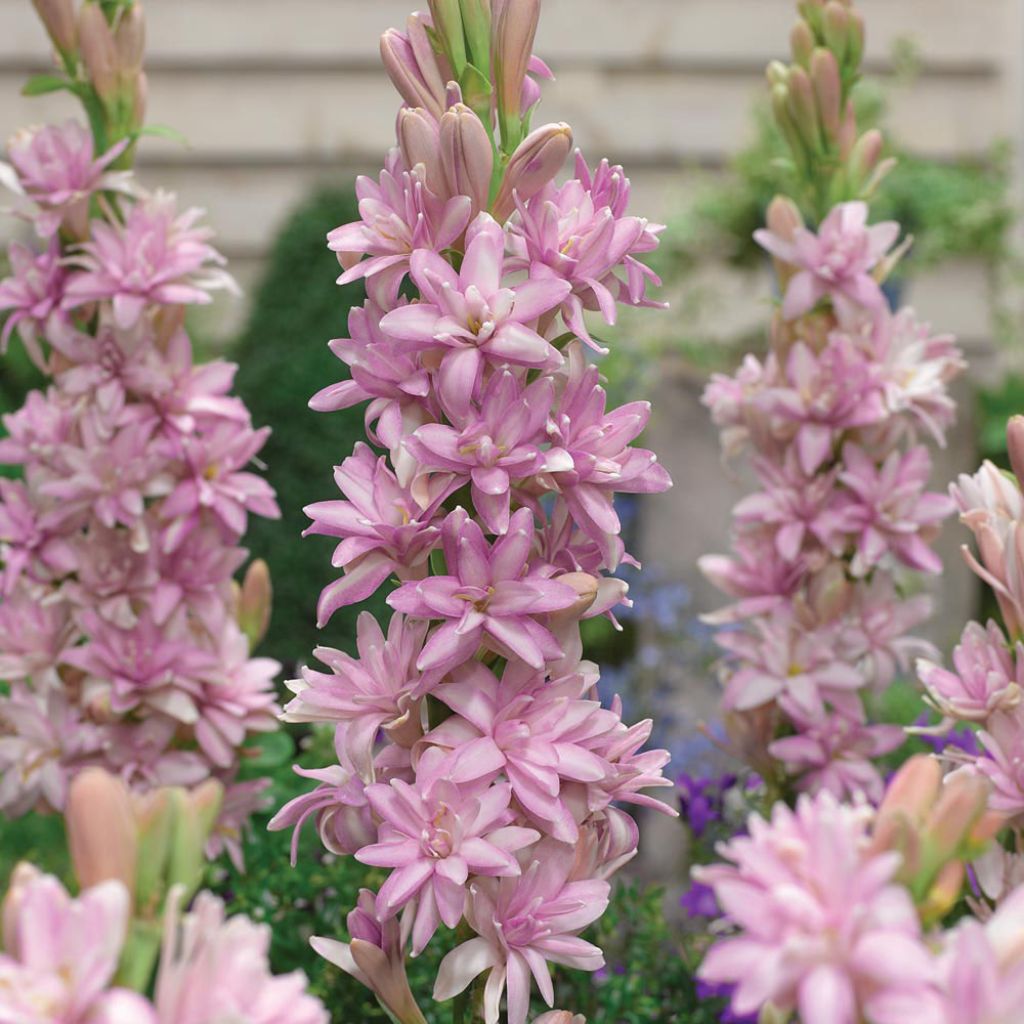

Polianthes tuberosa Pink Sapphire - Tubéreuse Rose Double.
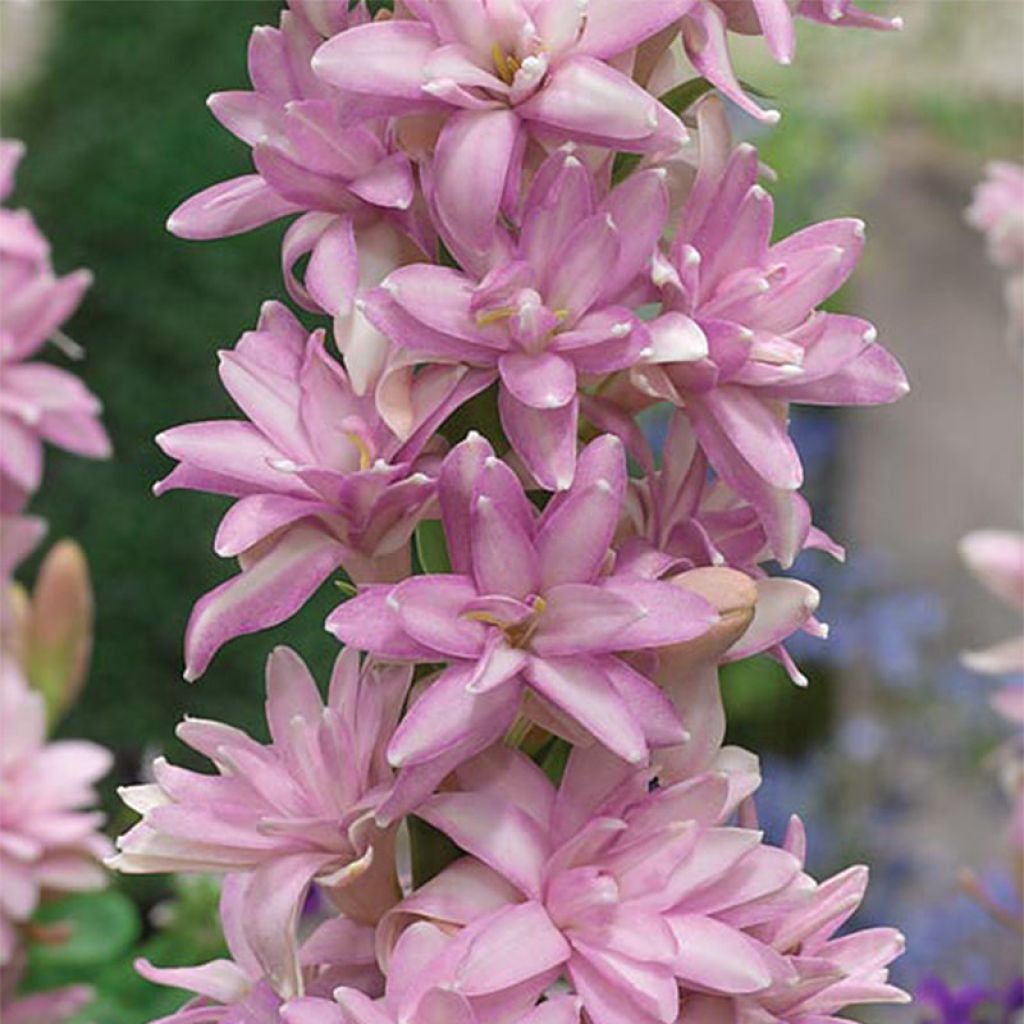

Polianthes tuberosa Pink Sapphire - Tubéreuse Rose Double.
Polianthes tuberosa Pink Sapphire
Polyanthes tuberosa Pink Sapphire
Tuberose
This plant carries a 6 months recovery warranty
More information
We guarantee the quality of our plants for a full growing cycle, and will replace at our expense any plant that fails to recover under normal climatic and planting conditions.
From €5.90 for pickup delivery and €6.90 for home delivery
Express home delivery from €8.90.
Does this plant fit my garden?
Set up your Plantfit profile →
Description
Polianthes tuberosa Pink Sapphire is a rare hybrid tuberose, a botanical treasure still relatively little known. Its cousin 'La Perle', fills the air with its heavy scent of white flowers and needs no introduction. Pink Sapphire is more resistant, taller than La Perle and unfurls a floral stem laden with very double flowers in summer, medium pink with a hint of smoke and a touch of mauve, with the same enchanting fragrance. Its flowering is a delight and its requirements are simple and clear, it likes sun, heat, and moist soil throughout its growing period. It should be grown in pots in most regions and brought indoors for winter.
Polianthes tuberosa is native to Mexico, particularly around Mexico City, which has a subtropical climate without frost, characterised by a dry season from November to May and a rather rainy summer season (from June to mid-October). This plant is becoming rare in its natural environment and generally grows in sandy but humus-rich, well-drained soils. These facts allow you to adapt cultivation methods in our climates.
'Pink Sapphire' is a recent horticultural hybrid, obtained at the University of Taiwan. This cultivar is the result of hybridisation between Polianthes tuberosa 'La Perle' and Polianthes howardii, a robust Mexican species. All these plants belong to the agave family (or asparagus family according to classification). They are semelparous tuberous perennials, meaning that each plant only flowers once, having produced several small tubers that will bloom two to three years later. 'Pink Sapphire' develops a basal rosette composed of long, narrow, flat, deciduous, light green leaves. They can measure up to 50 cm (20in) long and 1.5 to 2 cm (1in) wide. From the centre of the rosette, a floral stem that can reach 1.20 m (4ft) high will emerge. From July (or August depending on the region) onwards, it will bear a 20 to 40 cm (8 to 16in) spike composed of several dozens of flowers in a rich pink colour. These flowers gradually open from bottom to top and form several rows of waxy-looking petals that curve backwards, creating a beautiful star-shaped cup. Their very powerful fragrance is present day and night and lasts for some time if you cut them and display them in a vase.
Tuberose plants prefer bright and warm environments, they are sensitive to frost and do not like the cold. Few of us will be able to grow them in the ground, and in any case, they will need to be lifted to spend the winter dry and at a minimum of 10°C (50°F). Growing them in pots will be easier and allow them to be placed in the sun or the conservatory, in an atmosphere that will reveal their powerful fragrance. The luckiest among us will be able to grow them in the ground in a small bed or rockery, against a backdrop of nepetas for example, near the terrace to enjoy their beauty and exceptional perfume. Polianthes tuberosa is grown in India for the cosmetic and perfume industry. Its unique fragrance is used in the composition of several major perfumes.
Polianthes tuberosa Pink Sapphire in pictures
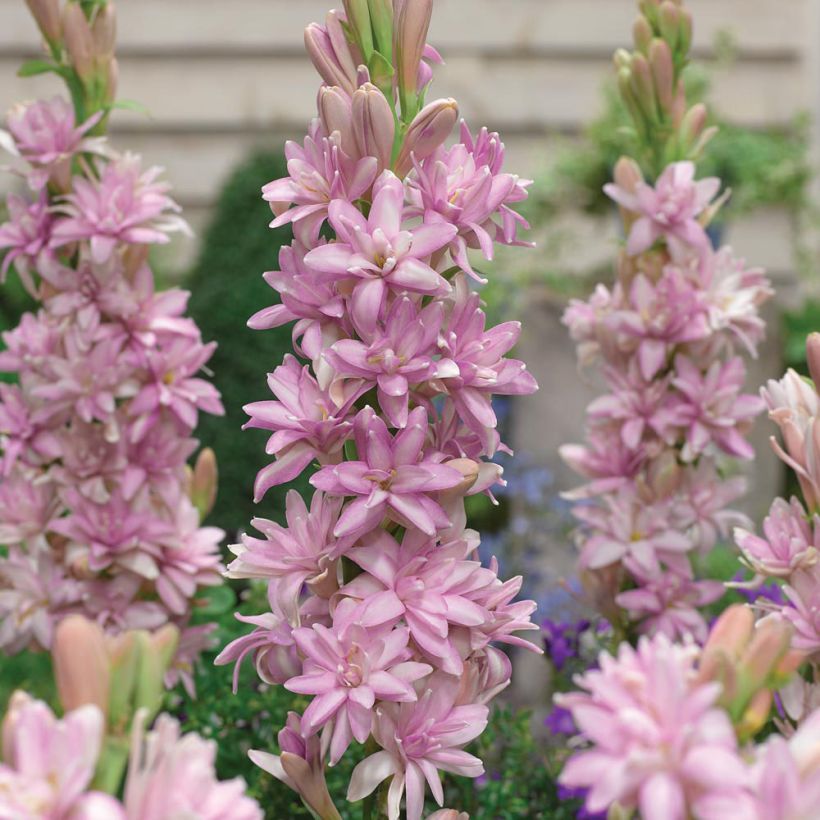

Plant habit
Flowering
Foliage
Botanical data
Polyanthes
tuberosa
Pink Sapphire
Agavaceae (Asparagaceae)
Tuberose
Cultivar or hybrid
Other Polianthes - Tuberose
Planting and care
In regions with a warm climate, plant Polianthes tuberosa in early spring when the soil has warmed up (10/15°C (50/59°F)). Choose a very sunny exposure as they need warmth to flower. Plant in well-drained soil, enriched with sand and leaf compost, and place them 10 cm (4in) deep, spaced 10 to 30 cm (4 to 12in) apart. Dig up the clumps before the first frost, let them dry for a few days, and store the tubers in sand, protected from frost and kept at a temperature above 10°C (50°F). You may find bulblets on the periphery of the main bulb. Gently remove them and put them in pots for the following season. However, they will not flower in the first year.
Container cultivation (recommended in most regions): To achieve earlier flowering, the bulbs can be brought into growth in pots and taken outside in April (if temperatures approach 15°C (59°F) during the day). Tuberose can be planted in large pots with a diameter of 25 to 30 cm (10 to 12in) for 1 bulblet and 3 bulblets per pot with a diameter of 40 to 50 cm (16 to 20in). The pots should be brought indoors in winter until the following April.
Planting period
Intended location
Care
Bulbs to grow in pots
Haven't found what you were looking for?
Hardiness is the lowest winter temperature a plant can endure without suffering serious damage or even dying. However, hardiness is affected by location (a sheltered area, such as a patio), protection (winter cover) and soil type (hardiness is improved by well-drained soil).

Photo Sharing Terms & Conditions
In order to encourage gardeners to interact and share their experiences, Promesse de fleurs offers various media enabling content to be uploaded onto its Site - in particular via the ‘Photo sharing’ module.
The User agrees to refrain from:
- Posting any content that is illegal, prejudicial, insulting, racist, inciteful to hatred, revisionist, contrary to public decency, that infringes on privacy or on the privacy rights of third parties, in particular the publicity rights of persons and goods, intellectual property rights, or the right to privacy.
- Submitting content on behalf of a third party;
- Impersonate the identity of a third party and/or publish any personal information about a third party;
In general, the User undertakes to refrain from any unethical behaviour.
All Content (in particular text, comments, files, images, photos, videos, creative works, etc.), which may be subject to property or intellectual property rights, image or other private rights, shall remain the property of the User, subject to the limited rights granted by the terms of the licence granted by Promesse de fleurs as stated below. Users are at liberty to publish or not to publish such Content on the Site, notably via the ‘Photo Sharing’ facility, and accept that this Content shall be made public and freely accessible, notably on the Internet.
Users further acknowledge, undertake to have ,and guarantee that they hold all necessary rights and permissions to publish such material on the Site, in particular with regard to the legislation in force pertaining to any privacy, property, intellectual property, image, or contractual rights, or rights of any other nature. By publishing such Content on the Site, Users acknowledge accepting full liability as publishers of the Content within the meaning of the law, and grant Promesse de fleurs, free of charge, an inclusive, worldwide licence for the said Content for the entire duration of its publication, including all reproduction, representation, up/downloading, displaying, performing, transmission, and storage rights.
Users also grant permission for their name to be linked to the Content and accept that this link may not always be made available.
By engaging in posting material, Users consent to their Content becoming automatically accessible on the Internet, in particular on other sites and/or blogs and/or web pages of the Promesse de fleurs site, including in particular social pages and the Promesse de fleurs catalogue.
Users may secure the removal of entrusted content free of charge by issuing a simple request via our contact form.

































